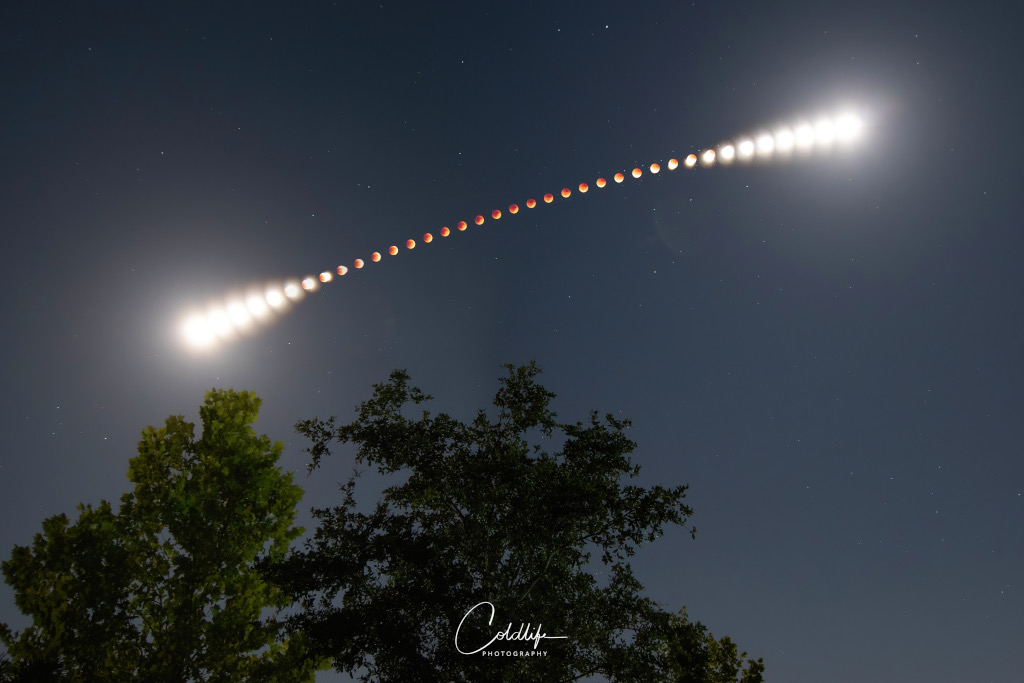2022年5月19日
A Digital Lunar Eclipse
Image Credit & Copyright: Michael Cain
Explanation: Recorded on May 15/16 this sequence of exposures follows the Full Moon during a total lunar eclipse as it arcs above treetops in the clearing skies of central Florida. A frame taken every 5 minutes by a digital camera shows the progression of the eclipse over three hours. The bright lunar disk grows dark and red as it glides through planet Earth’s shadow. In fact, counting the central frames in the sequence measures the roughly 90 minute duration of the total phase of this eclipse. Around 270 BC, the Greek astronomer Aristarchus also measured the duration of total lunar eclipses, but probably without the benefit of digital watches and cameras. Still, using geometry he devised a simple and impressively accurate way to calculate the Moon’s distance in terms of the radius of planet Earth, from the eclipse duration.
Tomorrow’s picture: a view from Earth’s shadow
数码时代的月食
影像提供与版权: Michael Cain
说明: 这幅摄于2022年5月15/16日的序列影像,记录满月在佛罗里达州中部绿树上方的清朗天空中,于月全食期间曳出的迹线弧及月面变化。影像里的序列照片,是由数码相机每隔5分钟间拍摄一帧所得,用以呈现这例月食于3小时期间的进程。从影像可清楚见到明亮的月盘,在穿入地球的影子之后,变暗又变红。而更从影像序列在全食阶段的照片张数,可推得此次月全食的全食阶段约持续90分钟。远在公元前270年左右,希腊天文学家阿里斯塔克斯也曾测量过月食持续的时间,当然在该年代并无法借助于数码钟表和相机。不论如何,运用几何学,他找出了一个简单但很精确的方法,以地球半径为计量单位和月食持续的时间,找出了月亮的距离。
明日的图片: a view from Earth’s shadow



